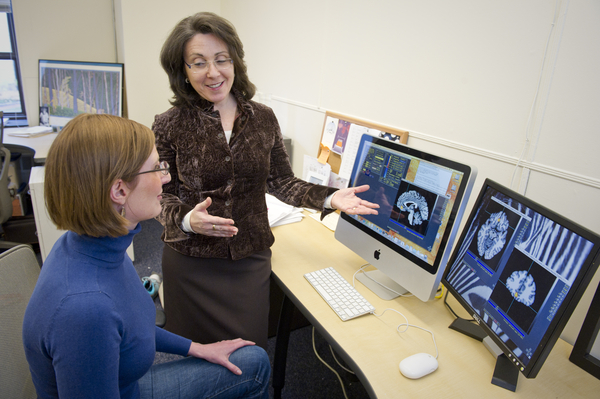Redefining emotion

The definition of emotion has intrigued philosophers, physicians and psychologists for centuries. Is it a basic biologic state or does it emerge from other physiological components?
Lisa Feldman Barrett, Distinguished Professor of Psychology in the College of Science, analyzed 20 years’ worth of neuroimaging studies to find out.
The results, which will be published in June in the journal Behavioral and Brain Sciences, challenge conventional wisdom.
“Right now, the field and even popular culture writes about the brain as if specific psychological events are localized to specific brain tissues,” Barrett said. “So, for example, when you have a memory it happens in the hippocampus and when you have fear it happens in the amygdala.”
Barrett’s findings suggested the exact opposite.
Her Interdisciplinary Affective Science Laboratory completed a meta-analysis of thousands of data points from hundreds of studies between the years 1990 and 2005. The findings suggest that brain regions once thought to be specifically and consistently associated with particular emotions are in fact active across a variety of emotional — and even non-emotional — states.
Neuroimaging studies don’t directly measure neural activity, Barrett explained. Instead, they measure blood-flow changes in the brain. These changes, when amplified, can be measured as fluctuations in a larger magnetic field.
“So then you’ve got to figure out what’s signal and what’s noise,” Barrett said. “Which changes are telling you about neurons firing in the brain and which ones are not.”
There are two ways to tease out the real data from the noise — either repeat the study hundreds of times or limit the statistical analysis to “only look at the points of activity in the brain that are the most intense,” Barrett said.
Most neuroimaging studies, which assume that emotion is localized to specific brain regions such as the amygdala or the insula, choose the latter approach, since the former is nearly impossible in terms of time and cost.
To avoid these limitations, Barrett and her team analyzed the entire body of literature. They found that emotions, surprisingly, are not specifically associated with particular brain regions. Some brain regions were consistently activated across emotions and tended to be active in studies of other mental states such as memory or attention.
“These data suggest that the brain is populated by a set of basic operations, or ingredients, that are not specific to emotions or thoughts or memories,” Barrett said.
“The idea is that thoughts, memories and emotions are subjective distinctions that we make,” she added. “Other cultures don’t make the distinction between cognition and emotion.”
The amygdala, for example, which Barrett said is one of the most connected regions in the brain, doesn’t fire only when a person experiences fear, but whenever the brain doesn’t have enough information about what to do next. Sometimes, but not always, we subjectively experience this uncertainty as fear, Barrett said.
In the six years between 2005 and 2011, more than 200 additional neuroimaging studies have emerged. Barrett’s team has added these to the database and will begin looking for representative patterns across the brain. This might allow researchers to predict emotional states, which could have far reaching implications for future psychological studies.





